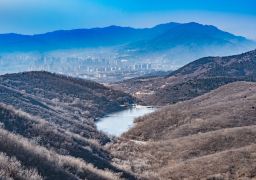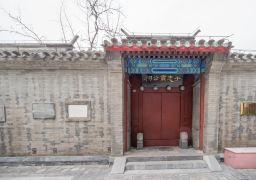On an autumn night in the 11th year of the Yuanhe period in the Tang Dynasty (816 AD), Bai Juyi, who was serving as the magistrate of Jiangzhou, bid farewell to guests at the head of the Xunyang River. As he did so, he was struck by the mournful sound of a pipa emanating from a nearby boat. The melody was so moving that he guided his boat towards the source of the music. There, he discovered a singing girl from the capital.
Bai Juyi, touched by her performance, prepared wine and food anew and requested that she play another piece, allowing him to fully appreciate the beauty of her music. As she narrated her life story, he learned that she had once been a celebrated performer but had eventually married a merchant and now found herself guarding an empty boat at the river’s mouth, coming and going with the tides.
The magistrate identified with the pipa girl’s unfortunate life, seeing parallels with his own rough experiences. Overwhelmed with a mix of emotions, he lamented, “We are both ill-starred drifters in this world. Why should we have known each other before we met?” Inspired by these feelings, Bai Juyi penned his emotions into poetry, creating the timeless masterpiece known as “The Song of Pipa.”

In honor of this renowned poet, the people of Jiangzhou erected the Pipa Pavilion at the very spot where Bai Juyi had bid his guests farewell under the night sky at the head of the Xunyang River. Over the course of more than a millennium, the Pipa Pavilion has been built and destroyed multiple times. In the spring of 1988, it was reconstructed once again.
The rebuilt Pipa Pavilion now stands on the eastern side of the Jiujiang Yangtze River Bridge, spanning an area of 3,300 square meters. It is designed as a garden that emulates the architectural style of the Tang Dynasty. The central structure, the Pipa Pavilion itself, is poised atop a granite foundation that rises more than two zhang in height.Pipa Pavilion, a structure with six corners and two tiers, boasts green-tiled roofs and red pillars, adorned with elegantly upturned eaves and double eaves. The pavilion is encircled by white stone railings, exuding an air of solemnity and steadfastness. A grand plaque bearing the golden characters “Pipa Pavilion” is a signature work of Liu Haisu, a renowned contemporary artist.

The pavilion’s pillars are inscribed with couplets collected by Dong Yunyan, a Qing Dynasty scholar. These verses, “Playing flowing water and playing the moon once. Half entering the river and sky and half entering the clouds,” capture the essence of the sounds and sights of water, wind, river, sky, clouds, and the evening moon that envelop the Pipa Pavilion. These poetic lines paint a vivid picture and provoke thought.
Inside, the pavilion displays Bai Juyi’s poems and essays, along with images of his travels in Jiangzhou. On the platform base stands a three-meter-tall white marble statue of Bai Juyi, depicting the poet in a thoughtful and dignified posture.

Adjacent to the Pipa Pavilion are stele corridors, which feature poems and essays from numerous scholars since the Tang Dynasty, all paying homage to the historic Pipa Pavilion.
The pavilion is open to visitors all year round, with operating hours from 09:00 to 19:30.
Admission优惠政策:
– Children under 6 years old (inclusive) or under 1.2 meters in height can enter for free with their valid certificates.
– Minors from 6 years old (exclusive) to 18 years old (inclusive) can enter at half price with their valid certificates. Full-time undergraduates and students below with their valid student ID cards can also enter at half price.The elderly over 65 years old (inclusive) can enter for free with their valid certificates.
Active servicemen, retired cadres of the military, disabled soldiers and those who enjoy pensions and living allowances can enter for free with their valid certificates.









